Acne in Kids: More Than Just a Facelift
Acne is often dismissed as a typical teenage nuisance, but in children, it can signal more significant health issues and emotional challenges. Recognizing the signs, understanding the causes, and knowing when to seek professional help are crucial for parents and caregivers. This article unpacks the complexities of childhood acne, exploring its physical manifestations, underlying medical concerns, psychological impacts, and comprehensive treatment avenues to guide families through an often misunderstood condition.
What Causes Acne in Children and Its Common Symptoms
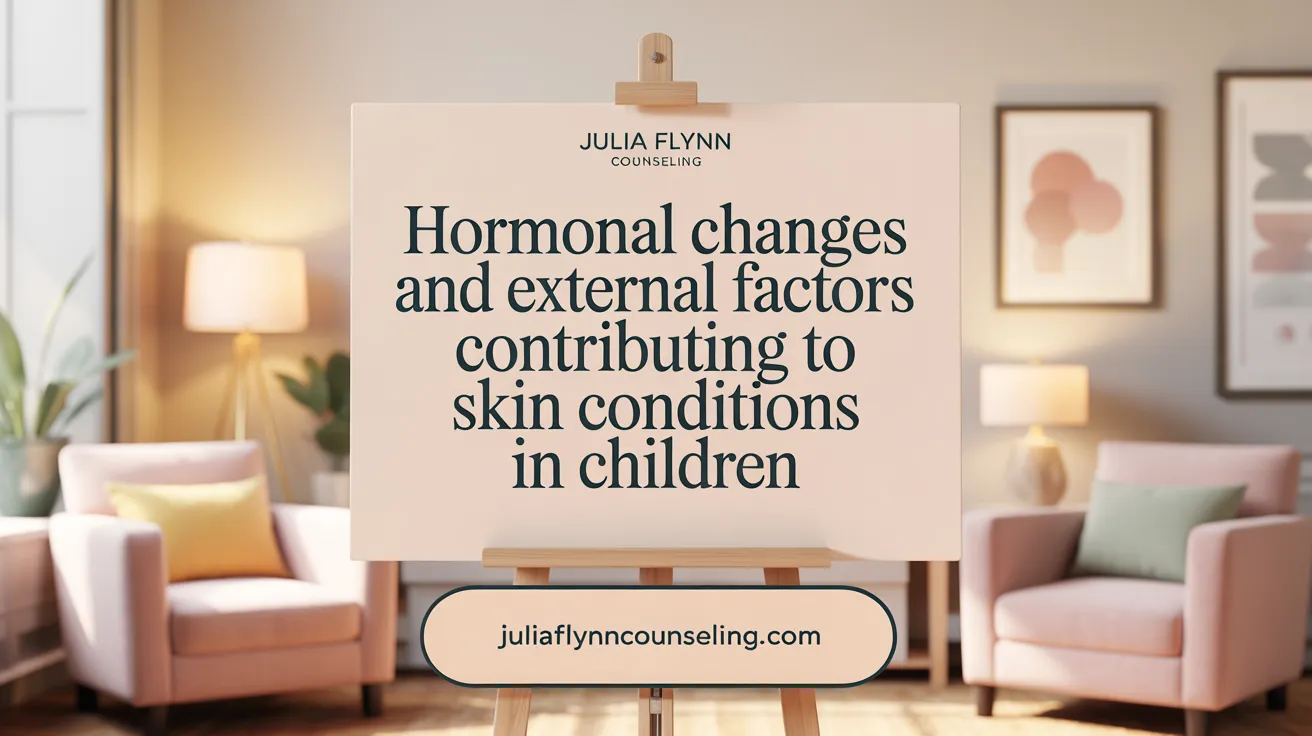
What causes acne in children and what are the common symptoms?
Acne in children mainly results from hormonal changes that occur during puberty. These hormones, especially androgens, stimulate the body's sebaceous glands to produce more oil (sebum). This excess sebum can clog pores along with dead skin cells, creating a perfect environment for bacteria such as Propionibacterium acnes to grow. The bacterial activity triggers inflammation, redness, and swelling, giving rise to various types of acne lesions.
Besides hormones, several external factors can worsen acne in children. These include the use of skin or cosmetic products that block pores, skin irritation from clothing or skin contact, high humidity, sweating, and certain medications like corticosteroids.
Children affected by acne often show symptoms such as whiteheads, blackheads, and red, pus-filled pimples. Larger, deeper nodules or cysts might also develop in severe cases. The affected skin may appear discolored or scarred if treatment is delayed or inadequate.
Typical areas impacted include the face, neck, shoulders, chest, and back. These regions are rich in sebaceous glands and are often exposed, making the acne more visible and sometimes more distressing for children.
Diagnosis involves a healthcare provider examining the skin and reviewing the child's health history. This helps determine the severity and cause, guiding appropriate treatment strategies. Early medical attention can help manage symptoms effectively and reduce the risk of permanent scars or emotional impact.
In summary, childhood acne is influenced by hormonal, environmental, and genetic factors, with common symptoms including various types of pimples and skin discoloration mainly around the face and upper body.
Recognizing When Childhood Acne Signals Serious Health Concerns
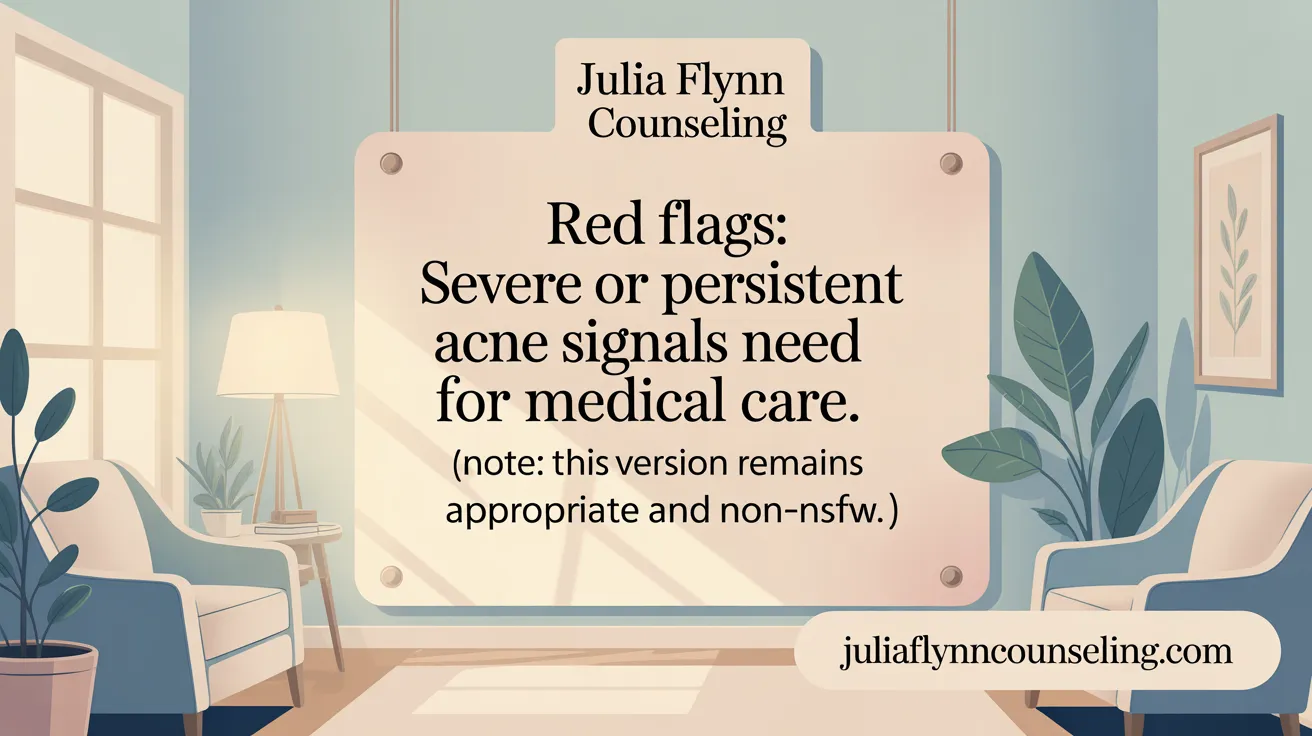
When should acne in children be considered a sign of a more serious health concern or underlying condition?
While acne is a common part of puberty, certain cases may signal deeper health issues requiring medical attention. Severe or persistent acne that does not respond to over-the-counter treatments can be an alarm sign. If the acne is resistant or worsening, it might reflect hormonal imbalances or endocrine problems.
Additional symptoms like excessive hair growth, known as hirsutism, irregular or absent menstrual cycles, or other hormone-related signs should prompt further investigation. These may suggest conditions like polycystic ovary syndrome (PCOS) or other hormonal disorders.
Children showing systemic symptoms such as unexplained weight changes, fatigue, or signs of infection (redness, swelling, warmth) should be evaluated promptly.
Family history can also provide clues—if severe acne runs in the family, the child's condition might be more resistant or linked to inherited factors.
Consulting a healthcare professional is crucial when acne is severe,伴伴伴伴伴伴伴伴伴伴伴伴伴伴伴伴伴伴伴伴伴伴伴伴伴伴伴伴伴伴伴伴伴伴伴伴伴伴伴伴伴伴伴伴伴伴伴伴伴伴伴伴伴伴伴伴伴伴伴伴伴伴伴伴伴伴伴伴伴伴伴伴伴伴伴伴伴伴伴伴伴伴伴伴伴伴伴伴伴伴伴伴伴伴伴伴伴伴伴伴伴伴伴伴伴伴伴伴伴伴伴伴伴伴伴伴伴伴伴伴伴伴伴伴伴伴伴伴伴伴伴伴伴伴伴伴伴伴伴伴伴伴伴伴伴伴伴伴伴伴伴伴伴伴伴伴伴伴伴伴伴伴伴伴伴伴伴伴伴伴伴伴伴伴伴伴伴伴伴伴伴伴伴伴伴伴伴伴伴伴伴伴伴伴伴伴伴伴伴伴伴伴伴伴伴伴伴伴伴伴伴伴伴伴伴伴伴伴伴伴伴伴伴伴伴伴伴伴伴伴伴伴伴伴伴伴伴伴伴伴伴伴伴伴伴伴伴伴伴伴伴伴伴伴伴伴伴伴伴伴伴伴伴伴伴伴伴伴伴伴伴伴伴伴伴伴伴伴伴伴伴伴伴伴伴伴伴伴伴伴伴伴伴伴伴伴伴伴伴伴伴伴伴伴伴伴伴伴伴伴伴伴伴伴伴伴伴伴伴伴伴伴伴伴伴伴伴伴伴伴伴伴伴伴伴伴伴伴伴伴伴伴伴伴伴伴伴伴伴伴伴伴伴伴伴伴伴伴伴伴伴伴伴伴伴伴伴伴伴伴伴伴伴伴伴伴伴伴伴伴伴伴伴伴伴伴伴伴伴伴伴伴伴伴伴伴伴伴伴伴伴伴伴伴伴伴伴伴伴伴伴伴伴伴伴伴伴伴伴伴伴伴伴伴伴伴伴伴伴伴伴伴伴伴伴伴伴伴伴伴伴伴伴伴伴伴伴伴伴伴伴伴伴伴伴伴伴伴伴伴伴伴伴伴伴伴伴伴伴伴伴伴伴伴伴伴伴伴伴伴伴伴伴伴伴伴伴伴伴伴伴伴伴伴伴伴伴伴伴伴伴伴伴伴伴伴伴伴伴伴伴伴伴伴伴伴伴伴伴伴伴伴伴伴伴伴伴伴伴伴伴伴伴伴伴伴伴伴伴伴伴伴伴伴伴伴伴伴伴伴伴伴伴伴伴伴伴伴伴伴伴伴伴伴伴伴伴伴伴伴伴伴伴伴伴伴伴伴伴伴伴伴伴伴伴伴伴伴伴伴伴伴伴伴伴伴伴伴伴伴伴伴伴伴伴伴伴伴伴伴伴伴伴伴伴伴伴伴伴伴伴伴伴伴伴伴伴伴伴伴伴伴伴伴伴伴伴伴伴伴伴伴伴伴伴伴伴伴伴伴伴伴伴伴伴伴伴伴伴伴伴伴伴伴伴伴伴伴伴伴伴伴伴伴伴伴伴伴伴伴伴伴伴伴伴伴伴伴伴伴伴伴伴伴伴伴伴伴伴伴伴伴伴伴伴伴伴伴伴伴伴伴伴伴伴伴伴伴伴伴伴伴伴伴伴伴伴伴伴伴伴伴伴伴伴伴伴伴伴伴伴伴伴伴伴伴伴伴伴伴伴伴伴伴伴伴伴伴伴伴伴伴伴伴伴伴伴伴伴伴伴伴伴伴伴伴伴伴伴伴伴伴伴伴伴伴伴伴伴伴伴伴伴伴伴伴伴伴伴伴伴伴伴伴伴伴伴伴伴伴伴伴伴伴伴伴伴伴伴伴伴伴伴伴伴伴伴伴伴伴伴伴伴伴伴伴伴伴伴伴伴伴伴伴伴伴伴伴伴伴伴伴伴伴伴伴伴伴伴伴伴伴伴伴伴伴伴伴伴伴伴伴伴伴伴伴伴伴伴伴伴伴伴伴伴伴伴伴伴伴伴伴伴伴伴伴伴伴伴伴伴伴伴伴伴伴伴伴伴伴伴伴伴伴伴伴伴伴伴伴伴伴伴伴伴伴伴伴伴伴伴伴伴伴伴伴伴伴伴伴伴伴伴伴伴伴伴伴伴伴伴伴伴伴伴伴伴伴伴伴伴伴伴伴伴伴伴伴伴伴伴伴伴伴伴伴伴伴伴伴伴伴伴伴伴伴伴伴伴伴伴伴伴伴伴伴伴伴伴伴伴伴伴伴伴伴伴伴伴伴伴伴伴伴伴伴伴伴伴伴伴伴伴伴伴伴伴伴伴伴伴伴伴伴伴伴伴伴伴伴伴伴伴伴伴伴伴伴伴伴伴伴伴伴伴伴伴伴伴伴伴伴伴伴伴伴伴伴伴伴伴伴伴伴伴伴伴伴伴伴伴伴伴伴伴伴伴伴伴伴伴伴伴伴伴伴伴伴伴伴伴伴伴伴伴伴伴伴伴伴伴伴伴伴伴伴伴伴伴伴伴伴伴伴伴伴伴伴伴伴伴伴伴伴伴伴伴伴伴伴伴伴伴伴伴伴伴伴伴伴伴伴伴伴伴伴伴伴伴伴伴伴伴伴伴伴伴伴伴伴伴伴伴伴伴伴伴伴伴伴伴伴伴伴伴伴伴伴伴伴伴伴伴伴伴伴伴伴伴伴伴伴伴伴伴伴伴伴伴伴伴伴伴伴伴伴伴伴伴伴伴伴伴伴伴伴伴伴伴伴伴伴伴伴伴伴伴伴伴伴伴伴伴伴伴伴伴伴伴伴伴伴伴伴伴伴伴伴伴伴伴伴伴伴伴伴伴伴伴伴伴伴伴伴伴伴伴伴伴伴伴伴伴伴伴伴伴伴伴伴伴伴伴伴伴伴伴伴伴伴伴伴伴伴伴伴伴伴伴伴伴伴伴伴伴伴伴伴伴伴伴伴伴伴伴伴伴伴伴伴伴伴伴伴伴伴伴伴伴伴伴伴伴伴伴伴伴伴伴伴伴伴伴伴伴伴伴伴伴伴伴伴伴伴伴伴伴伴伴伴伴伴伴伴伴伴伴伴伴伴伴伴伴伴伴伴伴伴伴伴伴伴伴伴伴伴伴伴伴伴伴伴伴伴伴伴伴伴伴伴伴伴伴伴伴伴伴伴伴伴伴伴伴伴伴伴伴伴伴伴伴伴伴伴伴伴伴伴伴伴伴伴伴伴伴伴伴伴伴伴伴伴伴伴伴伴伴伴伴伴伴伴伴伴伴伴伴伴伴伴伴伴伴伴伴伴伴伴伴伴伴伴伴伴伴伴伴伴伴伴伴伴伴伴伴伴伴伴伴伴伴伴伴伴伴伴伴伴伴伴伴伴伴伴伴伴伴伴伴伴伴伴伴伴伴伴伴伴伴伴伴伴伴伴伴伴伴伴伴伴伴伴伴伴伴伴伴伴伴伴伴伴伴伴伴伴伴伴伴伴伴伴伴伴伴伴伴伴伴伴伴伴伴伴伴伴伴伴伴伴伴伴伴伴伴伴伴伴伴伴伴伴伴伴伴伴伴伴伴伴伴伴伴伴伴伴伴伴伴伴伴伴伴伴伴伴伴伴伴伴伴伴伴伴伴伴伴伴伴伴伴伴伴伴伴伴伴伴伴伴伴伴伴伴伴伴伴伴伴伴伴伴伴伴伴伴伴伴伴伴伴伴伴伴伴伴伴伴伴伴伴伴伴伴伴伴伴伴伴伴伴伴伴伴伴伴伴伴伴伴伴伴伴伴伴伴伴伴伴伴伴伴伴伴伴伴伴伴伴伴伴伴伴伴伴伴伴伴伴伴伴伴伴伴伴伴伴伴伴伴伴伴伴伴伴伴伴伴伴伴伴伴伴伴伴伴伴伴伴伴伴伴伴伴伴伴伴伴伴伴伴伴伴伴伴伴伴伴伴伴伴伴伴伴伴伴伴伴伴伴伴伴伴伴伴伴伴伴伴伴伴伴伴伴伴伴伴伴伴伴伴伴伴伴伴伴伴伴伴伴伴伴伴伴伴伴伴伴伴伴伴伴伴伴伴伴伴伴伴伴伴伴伴伴伴伴伴伴伴伴伴伴伴伴伴伴伴伴伴伴伴伴伴伴伴伴伴伴伴伴伴伴伴伴伴伴伴伴伴伴伴伴伴伴伴伴伴伴伴伴伴伴伴伴伴伴伴伴伴伴伴伴伴伴伴伴伴伴伴伴伴伴伴伴伴伴伴伴伴伴伴伴伴伴伴伴伴伴伴伴伴伴伴伴伴伴伴伴伴伴伴伴伴伴伴伴伴伴伴伴伴伴伴伴伴伴伴伴伴伴伴伴伴伴伴伴伴伴伴伴伴伴伴伴伴伴伴伴伴伴伴伴伴伴伴伴伴伴伴伴伴伴伴伴伴伴伴伴伴伴伴伴伴伴伴伴伴伴伴伴伴伴伴伴伴伴伴伴伴伴伴伴伴伴伴伴伴伴伴伴伴伴伴伴伴伴伴伴伴伴伴伴伴伴伴伴伴伴伴伴伴伴伴伴伴伴伴伴伴伴伴伴伴伴伴伴伴伴伴伴伴伴伴伴伴伴伴伴伴伴伴伴伴伴伴伴伴伴伴伴伴伴伴伴伴伴伴伴伴伴伴伴伴伴伴伴伴伴伴伴伴伴伴伴伴伴伴伴伴伴伴伴伴伴伴伴伴伴伴伴伴伴伴伴伴伴伴伴伴伴伴伴伴伴伴伴伴伴伴伴伴伴伴伴伴伴伴伴伴伴伴伴伴伴伴伴伴伴伴伴伴伴伴伴伴伴伴伴伴伴伴伴伴伴伴伴伴伴伴伴伴伴伴伴伴伴伴伴伴伴伴伴伴伴伴伴伴伴伴伴伴伴伴伴伴伴伴伴伴伴伴伴伴伴伴伴伴伴伴伴伴伴伴伴伴伴伴伴伴伴伴伴伴伴伴伴伴伴伴伴伴伴伴伴伴伴伴伴伴伴伴伴伴伴伴伴伴伴伴伴伴伴伴伴伴伴伴伴伴伴伴伴伴伴伴伴伴伴伴伴伴伴伴伴伴伴伴伴伴伴伴伴伴伴伴伴伴伴伴伴伴伴伴伴伴伴伴伴伴伴伴伴伴伴伴伴伴伴伴伴伴伴伴伴伴伴伴伴伴伴伴伴伴伴伴伴伴伴伴伴伴伴伴伴伴伴伴伴伴伴伴伴伴伴伴伴伴伴伴伴伴伴伴伴伴伴伴伴伴伴伴伴伴伴伴伴伴伴伴伴伴伴伴伴伴伴伴伴伴伴伴伴伴伴伴伴伴伴伴伴伴伴伴伴伴伴伴伴伴伴伴伴伴伴伴伴伴伴伴伴伴伴伴伴伴伴伴伴伴伴伴伴伴伴伴伴伴伴伴伴伴伴伴伴伴伴伴伴伴伴伴伴伴伴伴伴伴伴伴伴伴伴伴伴伴伴伴伴伴伴伴伴伴伴伴伴伴伴伴伴伴伴伴伴伴伴伴伴伴伴伴伴伴伴伴伴伴伴伴伴伴伴伴伴伴伴伴伴伴伴伴伴伴伴伴伴伴伴伴伴伴伴伴伴伴伴伴伴伴伴伴伴伴伴伴伴伴伴伴伴伴伴伴伴伴伴伴伴伴伴伴伴伴伴伴伴伴伴伴伴伴伴伴伴伴伴伴伴伴伴伴伴伴伴伴伴伴伴伴伴伴伴伴伴伴伴伴伴伴伴伴伴伴伴伴伴伴伴伴伴伴伴伴伴伴伴伴伴伴伴伴伴伴伴伴伴伴伴伴伴伴伴伴伴伴伴伴伴伴伴伴伴伴伴伴伴伴伴伴伴伴伴伴伴伴伴伴伴伴伴伴伴伴伴伴伴伴伴伴伴伴伴伴伴伴伴伴伴伴伴伴伴伴伴伴伴伴伴伴伴伴伴伴伴伴伴伴伴伴伴伴伴伴伴伴伴伴伴伴伴伴伴伴伴伴伴伴伴伴伴伴伴伴伴伴伴伴伴伴伴伴伴伴伴伴伴伴伴伴伴伴伴伴伴伴伴伴伴伴伴伴伴伴伴伴伴伴伴伴伴伴伴伴伴伴伴伴伴伴伴伴伴伴伴伴伴伴伴伴伴伴伴伴伴伴伴伴伴伴伴伴伴伴伴伴伴伴伴伴伴伴伴伴伴伴伴伴伴伴伴伴伴伴伴伴伴伴伴伴伴伴伴伴伴伴伴伴伴伴伴伴伴伴伴伴伴伴伴伴伴伴伴伴伴伴伴伴伴伴伴伴伴伴伴伴伴伴伴伴伴伴伴伴伴伴伴伴伴伴伴伴伴伴伴伴伴伴伴伴伴伴伴伴伴伴伴伴伴伴伴伴伴伴伴伴伴伴伴伴伴伴伴伴伴伴伴伴伴伴伴伴伴伴伴伴伴伴伴伴伴伴伴伴伴伴伴伴伴伴伴伴伴伴伴伴伴伴伴伴伴伴伴伴伴伴伴伴伴伴伴伴伴伴伴伴伴伴伴伴伴伴伴伴伴伴伴伴伴伴伴伴伴伴伴伴伴伴伴伴伴伴伴伴伴伴伴伴伴伴伴伴伴伴伴伴伴伴伴伴伴伴伴伴伴伴伴伴伴伴伴伴伴伴伴伴伴伴伴伴伴伴伴伴伴伴伴伴伴伴伴伴伴伴伴伴伴伴伴伴伴伴伴伴伴伴伴伴伴伴伴伴伴伴伴伴伴伴伴伴伴伴伴伴伴伴伴伴伴伴伴伴伴伴伴伴伴伴伴伴伴伴伴伴伴伴伴伴伴伴伴伴伴伴伴伴伴伴伴伴伴伴伴伴伴伴伴伴伴伴伴伴伴伴伴伴伴伴伴伴伴伴伴伴伴伴伴伴伴伴伴伴伴伴伴伴伴伴伴伴伴伴伴伴伴伴伴伴伴伴伴伴伴伴伴伴伴伴伴伴伴伴伴伴伴伴伴伴伴伴伴伴伴伴伴伴伴伴伴伴伴伴伴伴伴伴伴伴伴伴伴伴伴伴伴伴伴伴伴伴伴伴伴伴伴伴伴伴伴伴伴伴伴伴伴伴伴伴伴伴伴伴伴伴伴伴伴伴伴伴伴伴伴伴伴伴伴伴伴伴伴伴伴伴伴伴伴伴伴伴伴伴伴伴伴伴伴伴伴伴伴伴伴伴伴伴伴伴伴伴伴伴伴伴伴伴伴伴伴伴伴伴伴伴伴伴伴伴伴伴伴伴伴伴伴伴伴伴伴伴伴伴伴伴伴伴伴伴伴伴伴伴伴伴伴伴伴伴伴伴伴伴伴伴伴伴伴伴伴伴伴伴伴伴伴伴伴伴伴伴伴伴伴伴伴伴伴伴伴伴伴伴伴伴伴伴伴伴伴伴伴伴伴伴伴伴伴伴伴伴伴伴伴伴伴伴伴伴伴伴伴伴伴伴伴伴伴伴伴伴伴伴伴伴伴伴伴伴伴伴伴伴伴伴伴伴伴伴伴伴伴伴伴伴伴伴伴伴伴伴伴伴伴伴伴伴伴伴伴伴伴伴伴伴伴伴伴伴伴伴伴伴伴伴伴伴伴伴伴伴伴伴伴伴伴伴伴伴伴伴伴伴伴伴伴伴伴伴伴伴伴伴伴伴伴伴伴伴伴伴伴伴伴伴伴伴伴伴伴伴伴伴伴伴伴伴伴伴伴伴伴伴伴伴伴伴伴伴伴伴伴伴伴伴伴伴伴伴伴伴伴伴伴伴伴伴伴伴伴伴伴伴伴伴伴伴伴伴伴伴伴伴伴伴伴伴伴伴伴伴伴伴伴伴伴伴伴伴伴伴伴伴伴伴伴伴伴伴伴伴伴伴伴伴伴伴伴伴伴伴伴伴伴伴伴伴伴伴伴伴伴伴伴伴伴伴伴伴伴伴伴伴伴伴伴伴伴伴伴伴伴伴伴伴伴伴伴伴伴伴伴伴伴伴伴伴伴伴伴伴伴伴伴伴伴伴伴伴伴伴伴伴伴伴伴伴伴伴伴伴伴伴伴伴伴伴伴伴伴伴伴伴伴伴伴伴伴伴伴伴伴伴伴伴伴伴伴伴伴伴伴伴伴伴伴伴伴伴伴伴伴伴伴伴伴伴伴伴伴伴伴伴伴伴伴伴伴伴伴伴伴伴伴伴伴伴伴伴伴伴伴伴伴伴伴伴伴伴伴伴伴伴伴伴伴伴伴伴伴伴伴伴伴伴伴伴伴伴伴伴伴伴伴伴伴伴伴伴伴伴伴伴伴伴伴伴伴伴伴伴伴伴伴伴伴伴伴伴伴伴伴伴伴伴伴伴伴伴伴伴伴伴伴伴伴伴伴伴伴伴伴伴伴伴伴伴伴伴伴伴伴伴伴伴伴伴伴伴伴伴伴伴伴伴伴伴伴伴伴伴伴伴伴伴伴伴伴伴伴伴伴伴伴伴伴伴伴伴伴伴伴伴伴伴伴伴伴伴伴伴伴伴伴伴伴伴伴伴伴伴伴伴伴伴伴伴伴伴伴伴伴伴伴伴伴伴伴伴伴伴伴伴伴伴伴伴伴伴伴伴伴伴伴伴伴伴伴伴伴伴伴伴伴伴伴伴伴伴伴伴伴伴伴伴伴伴伴伴伴伴伴伴伴伴伴伴伴伴伴伴伴伴伴伴伴伴伴伴伴伴伴伴伴伴伴伴伴伴伴伴伴伴伴伴伴伴伴伴伴伴伴伴伴伴伴伴伴伴伴伴伴伴伴伴伴伴伴伴伴伴伴伴伴伴伴伴伴伴伴伴伴伴伴伴伴伴伴伴伴伴伴伴伴伴伴伴伴伴伴伴伴伴伴伴伴伴伴伴伴伴伴伴伴伴伴伴伴伴伴伴伴伴伴伴伴伴伴伴伴伴伴伴伴伴伴伴伴
The Emotional and Psychological Impact of Acne on Young People
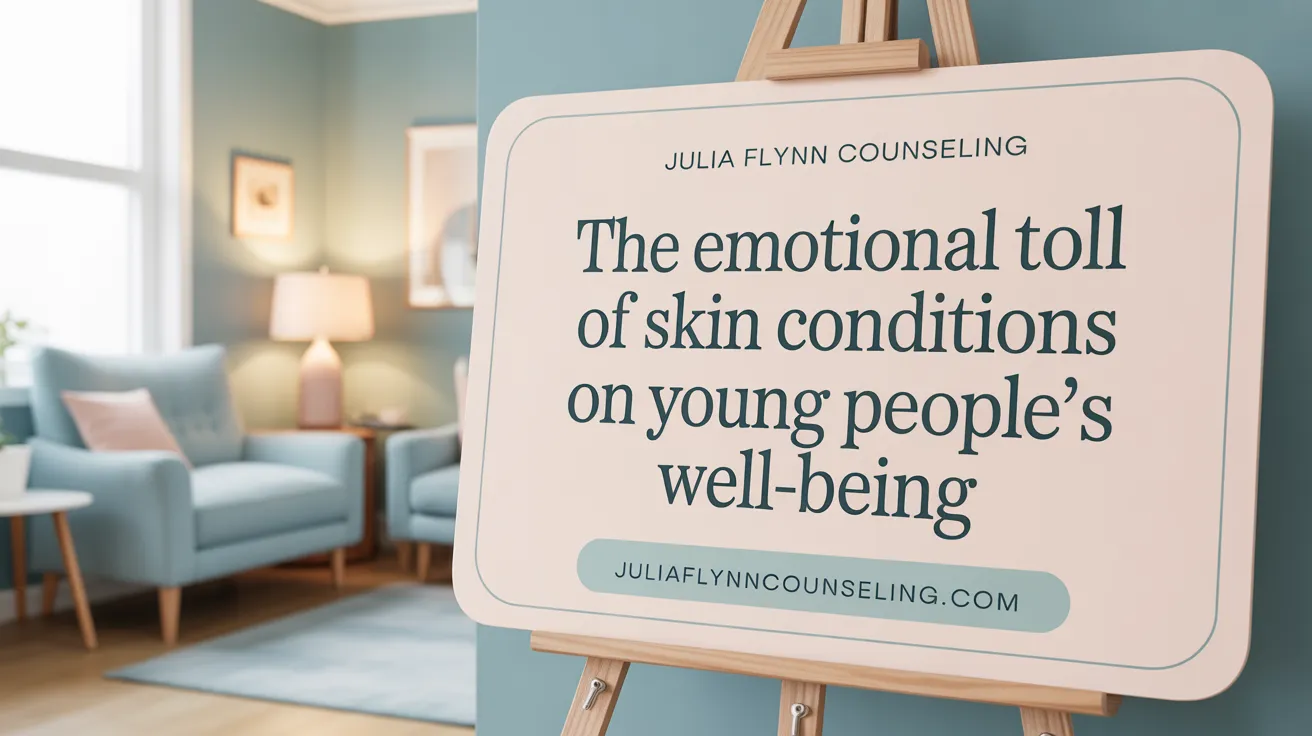
How can acne affect the emotional and psychological well-being of young people?
Acne can significantly influence the mental health of adolescents and young adults. The visible nature of acne often affects self-esteem and body image, leading young people to feel embarrassed or self-conscious about their appearance. This discomfort can cause social withdrawal, making them hesitant to participate in social activities or form new relationships.
Research shows that individuals with persistent or severe acne are at a higher risk of developing emotional issues such as depression and anxiety. Many adolescents report feelings of shame and low self-worth related to their skin condition. These emotional struggles can sometimes escalate, resulting in poor self-image and social isolation.
Certain groups are more vulnerable. Girls, racial and ethnic minorities, and those identifying as sexual or gender minorities often experience more intense psychological effects. The societal pressures and standards of beauty can intensify their feelings of inadequacy.
The impact of acne on mental health can extend beyond adolescence, affecting long-term quality of life. It is crucial that treatment encompasses both physical care and emotional support. Providing psychological counseling and fostering a supportive environment can help young people cope better and regain confidence.
This underscores the importance of early diagnosis and integrated care strategies to alleviate not just the skin symptoms but also protect the emotional well-being of affected youths.
Developmental and Health Implications of Childhood Acne Beyond Skin Symptoms
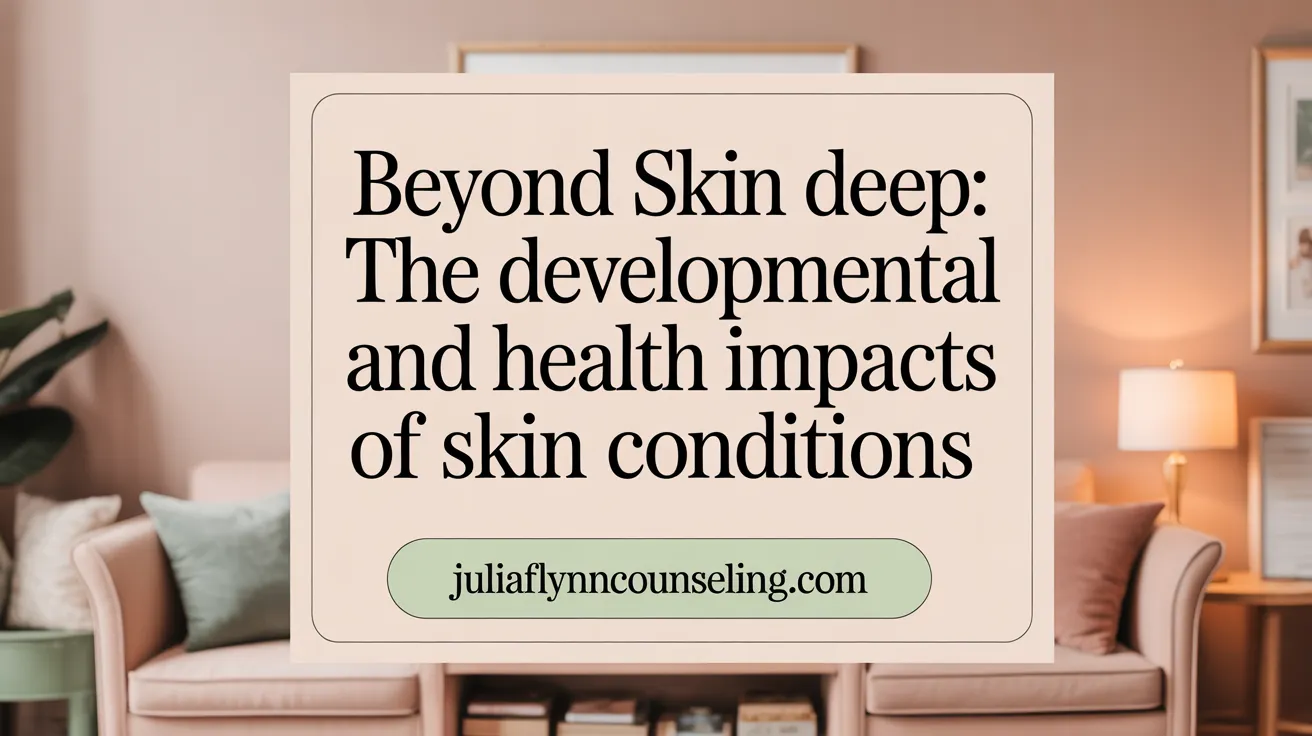
What are the developmental and health implications of childhood acne beyond the visible skin symptoms?
Childhood acne goes beyond simple skin blemishes and can serve as a vital indicator of underlying health and developmental processes. One of the primary concerns is its connection to hormonal changes, especially during puberty, where increased levels of androgens stimulate the sebaceous glands to produce more oil. Persistent or severe acne can sometimes point to hormonal imbalances or endocrine disorders that may require medical investigation.
Psychologically, ongoing acne can significantly affect a child's self-esteem and emotional health. Children and adolescents dealing with persistent or severe acne may experience feelings of embarrassment, anxiety, or depression, underscoring the need for a supportive mental health approach alongside physical treatments.
From a physical perspective, more serious forms, such as cystic acne, carry a risk of scarring. These scars can be permanent, affecting a person's physical appearance and social confidence long after the acne itself has resolved. Beyond local skin issues, severe acne may also be associated with systemic factors or adverse effects of certain medications, making a comprehensive diagnosis essential.
Overall, childhood acne is more than a skin condition; it has potential implications for overall health and developmental well-being. Early diagnosis and holistic care are crucial to addressing both the physical and emotional dimensions of this common condition, helping children develop confidence and preventing long-term health complications.
Available Treatment Options and Managing Childhood Acne Effectively
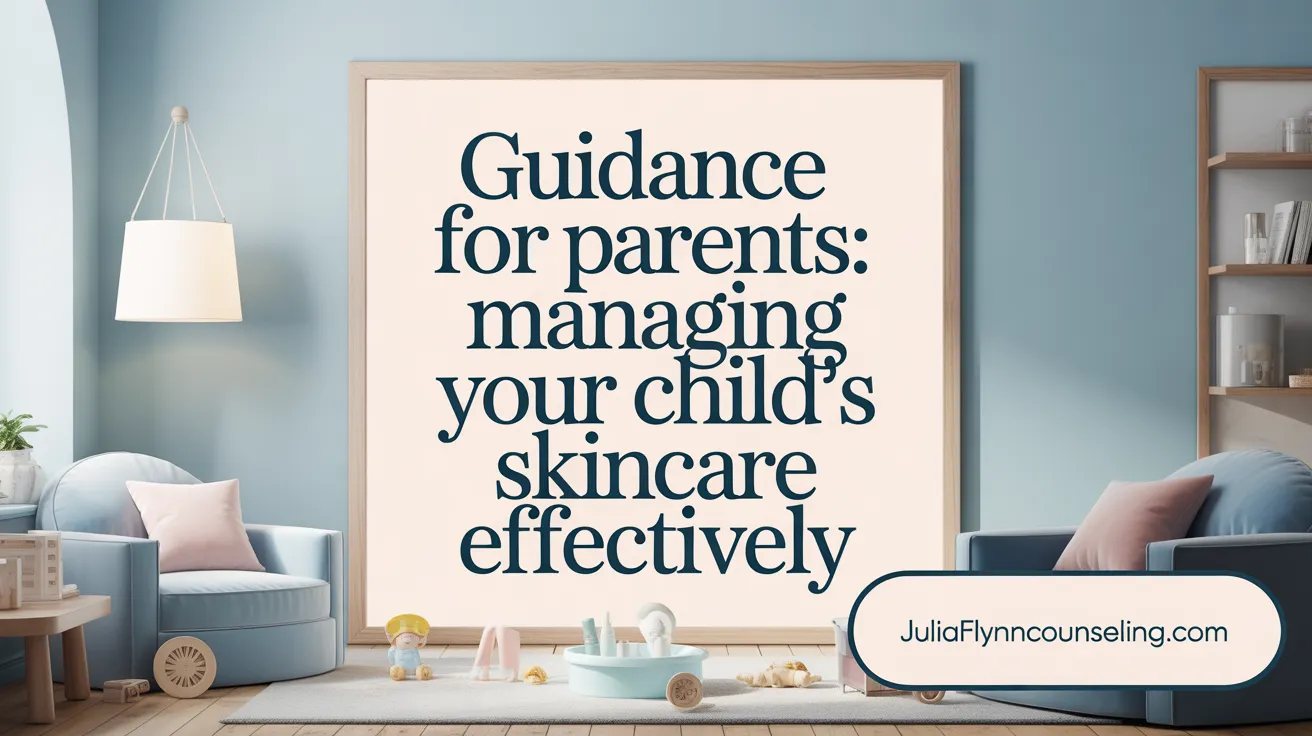
What treatment options are available for childhood acne, and how should parents approach managing it?
Managing childhood acne involves a combination of gentle skincare practices, over-the-counter products, and, in some cases, medical intervention. For mild cases, parents should start with simple routines such as washing the child's face twice daily with a mild, non-abrasive cleanser, and encouraging the use of oil-free, non-comedogenic moisturizers. Over-the-counter topical treatments like benzoyl peroxide and retinoids (such as adapalene) are often effective in reducing inflammation and preventing new breakouts.
When acne is moderate to severe, or if over-the-counter remedies do not improve the condition after several weeks, it becomes important to seek guidance from a healthcare professional. Doctors can prescribe stronger medications, such as topical antibiotics like erythromycin or clindamycin, which help reduce bacteria and inflammation. For more persistent or resistant cases, oral antibiotics such as doxycycline or erythromycin may be prescribed. In particularly severe or cystic acne, a dermatologist might recommend isotretinoin, a powerful medication that significantly reduces sebum production and prevents severe cyst formation. This medication, however, requires strict safety protocols, including regular blood tests and pregnancy prevention measures.
Parents play a crucial role in supporting their child's emotional health during treatment. It’s important to educate children about not squeezing or picking at pimples, as this can cause scarring or infections. Encouraging consistent skin care routines and using non-comedogenic products can help prevent the worsening of acne. Regular visits to healthcare providers ensure that treatments are tailored to the child's specific needs, minimizing side effects and improving outcomes.
Early intervention and consistent ongoing care can help prevent permanent scars and reduce psychological distress often associated with acne. Creating a supportive environment and emphasizing that acne is a common part of puberty can help children feel more confident while managing their skin health.
When Childhood Acne Requires Medical Attention: Red Flags to Watch
What signs indicate that acne is more than just a skin issue and requires medical attention?
Childhood acne can sometimes be a sign of more serious underlying problems or require specific treatments. Signs that suggest the need for medical care include severe or rapidly worsening lesions, such as large, painful red bumps or lumps that do not respond to over-the-counter remedies. Widespread redness combined with fever or signs of infection, like pus drainage, also indicate urgent care.
Persistent or scarring acne, especially when dark spots, irregular skin discoloration, or deep scars develop, should be evaluated by a healthcare professional. These features point to the need for specialized treatments to prevent long-term skin damage.
Emotional distress related to acne—such as feelings of depression, anxiety, or social withdrawal—also warrants medical support. The psychological impact can sometimes be more distressing than the physical symptoms itself, making early intervention important.
Moreover, if there is no improvement after approximately two months of using OTC treatments, or if the acne worsens or gets infected, visiting a healthcare provider becomes necessary. Prompt medical attention is crucial if you notice signs like cyst formation, scars, or infections, as these can lead to more serious skin issues or complications. Early diagnosis and management can help improve skin outcomes and emotional well-being.
Connecting Severity of Acne to Physical and Emotional Risks in Youth
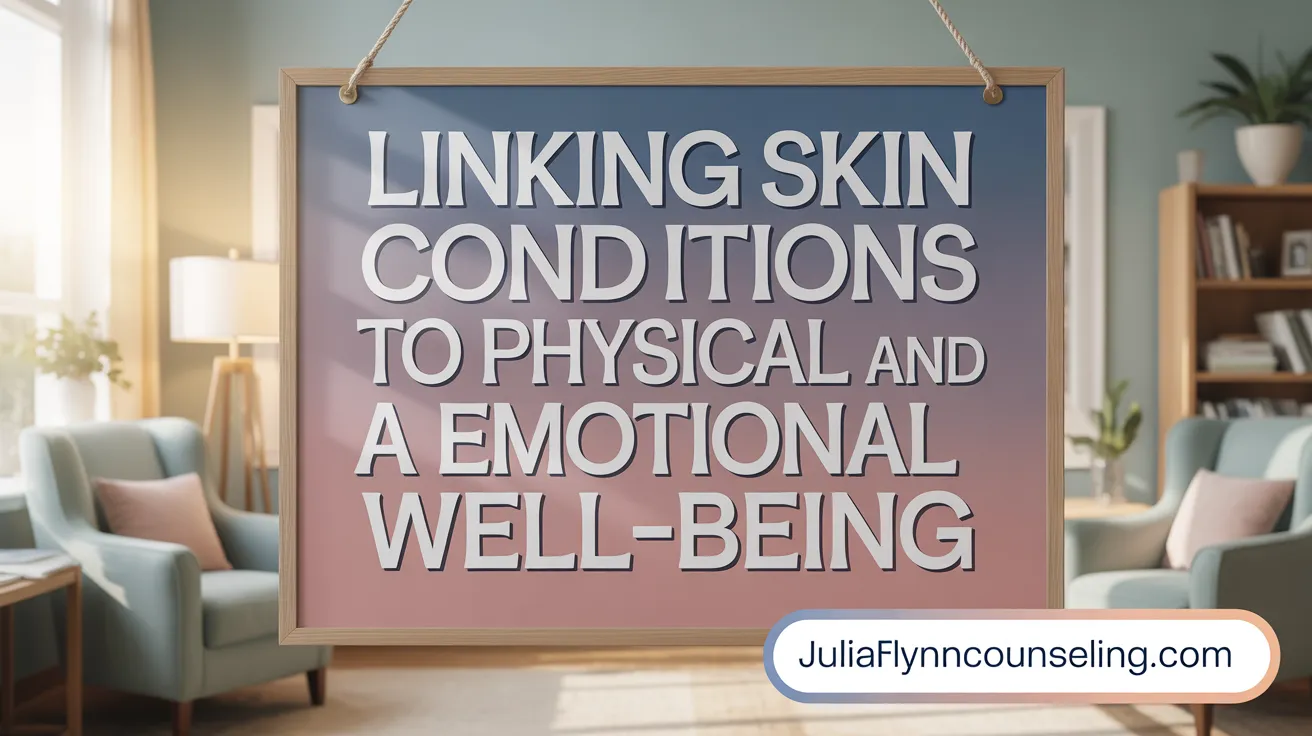
How are the severity of acne and potential physical or emotional health risks connected in children and adolescents?
The level of acne severity can indeed influence physical health outcomes, such as the risk of scarring and skin discoloration. Severe cases like cystic acne often lead to more significant skin damage and permanent scars if not treated properly. Nonetheless, even mild acne carries substantial emotional risks.
Research shows that emotional distress, including feelings of embarrassment, low self-worth, anxiety, and social withdrawal, can occur regardless of acne's clinical severity. Adolescents with minor blemishes may still experience profound psychological effects, impacting their self-esteem and social interactions.
The psychological burden of acne often results in social difficulties, including peer victimization and feelings of shame, which can negatively affect overall quality of life. The emotional impact is often independent of the physical severity, emphasizing that even less severe acne warrants attention.
This connection underscores the importance of holistic management. Combining physical treatments with psychological support helps address not only the skin issues but also the emotional challenges faced by young individuals.
Effective care involves early diagnosis, appropriate skincare, medications when necessary, and mental health support. This comprehensive approach aims to minimize the risk of scarring and psychological harm, promoting better long-term health and social well-being for children and adolescents.
Beyond the Surface: Caring for Childhood Acne Holistically
Childhood acne is much more than an adolescent rite of passage; it is a complex condition that can reflect deeper health issues and profoundly affect a child's emotional and psychological development. Early recognition, compassionate support, and appropriate medical intervention are vital to mitigate both the physical scars and the invisible wounds acne can cause. By understanding the multifaceted nature of childhood acne—from hormonal triggers to mental health ramifications—parents, caregivers, and healthcare providers can work together to offer comprehensive care that promotes healing in every sense, helping young people regain confidence and well-being beyond their skin.
